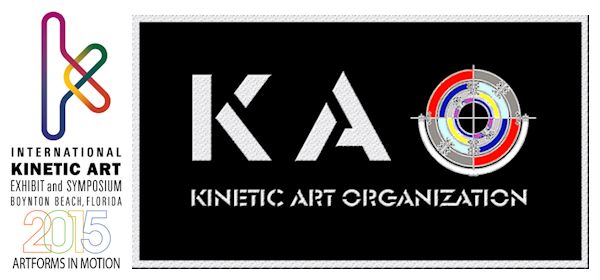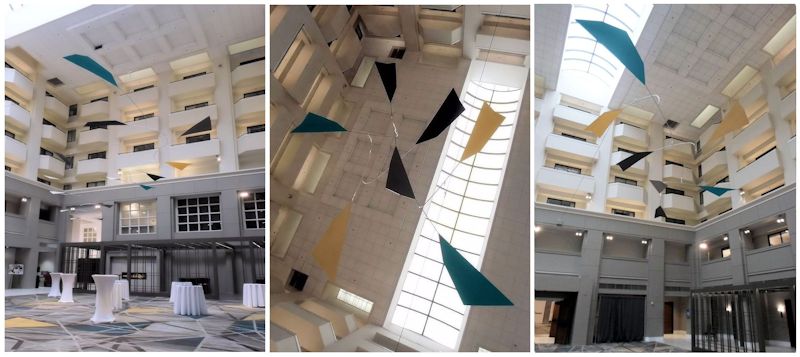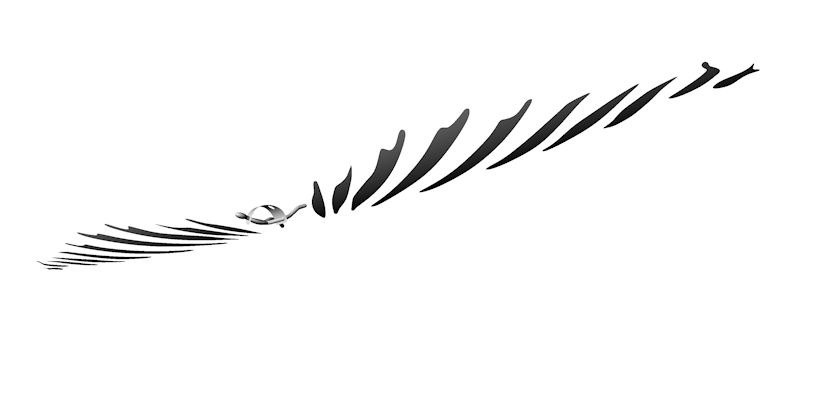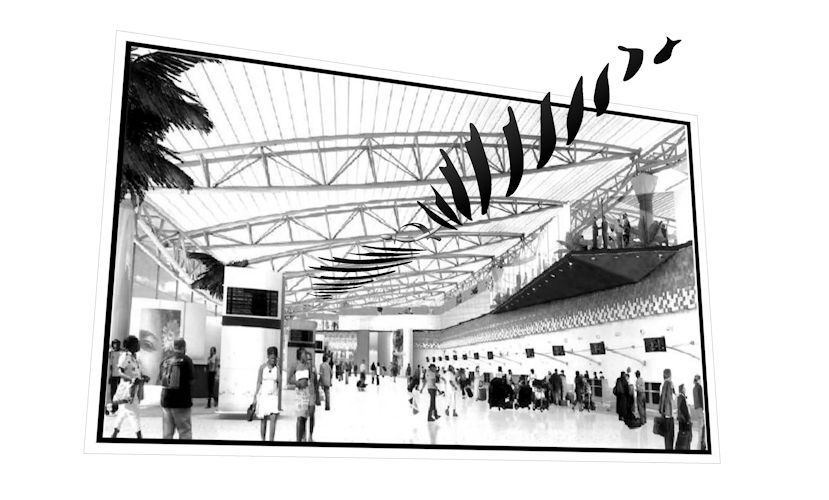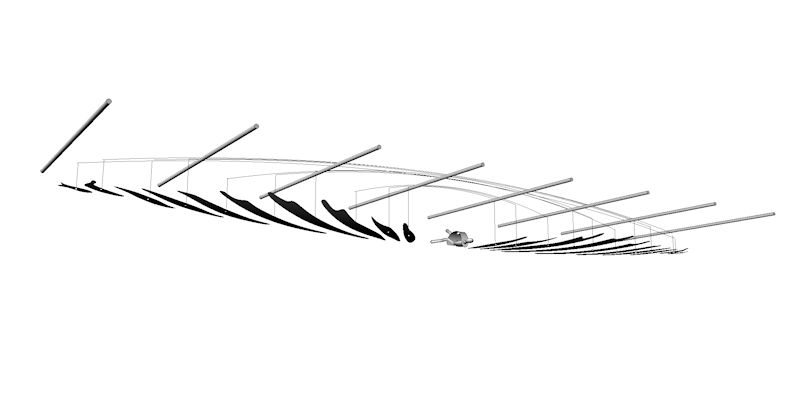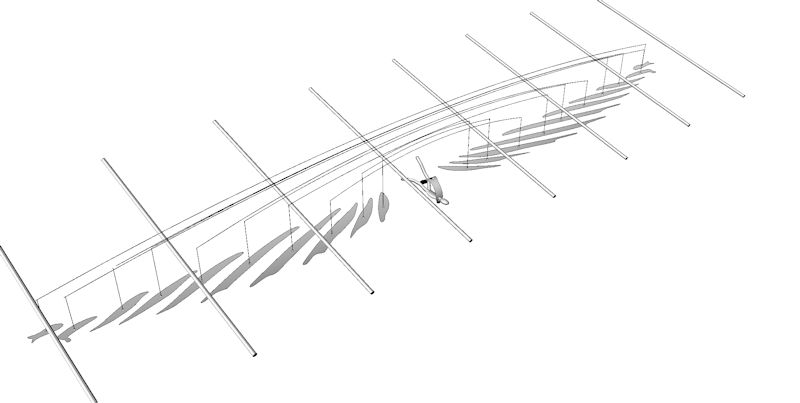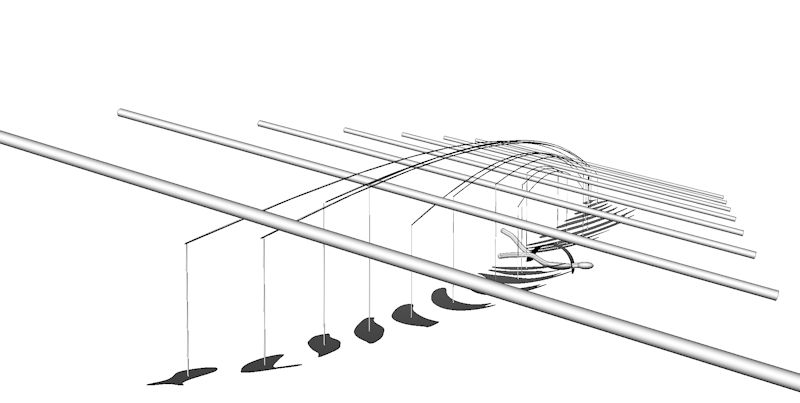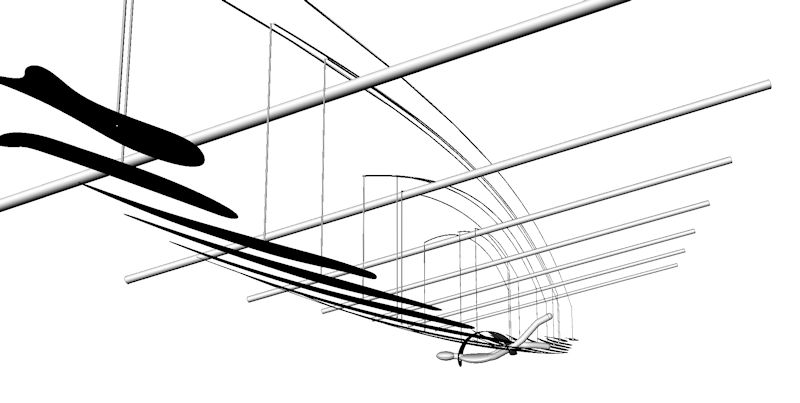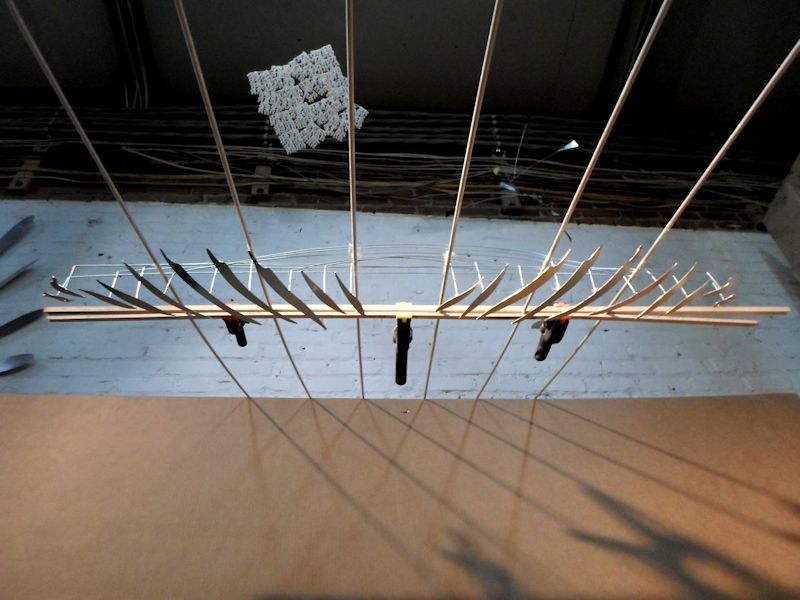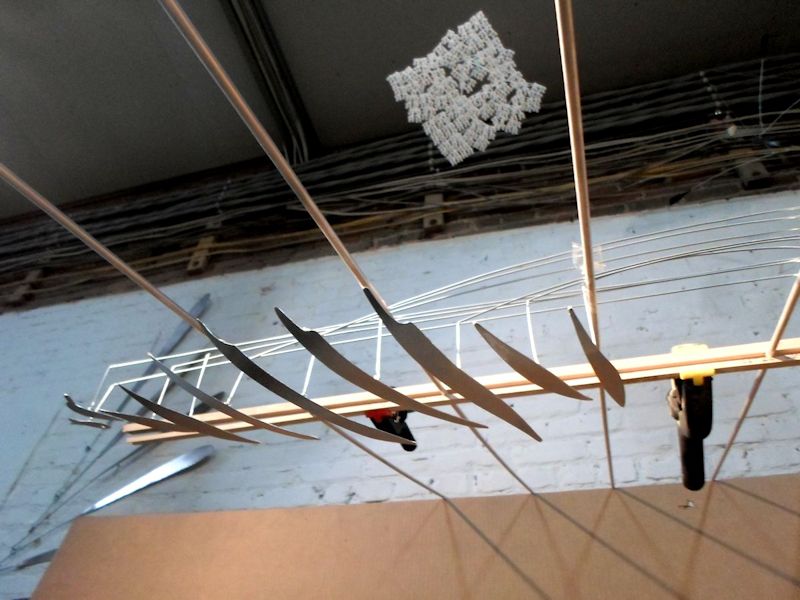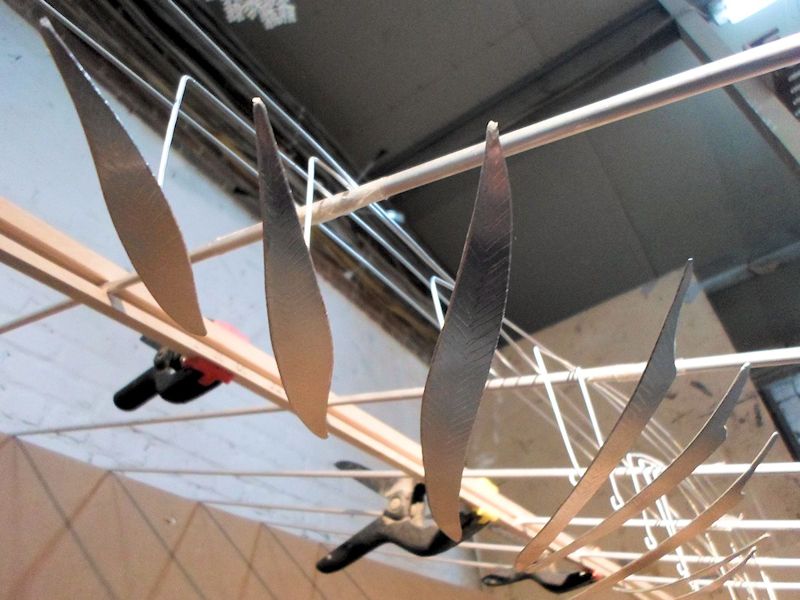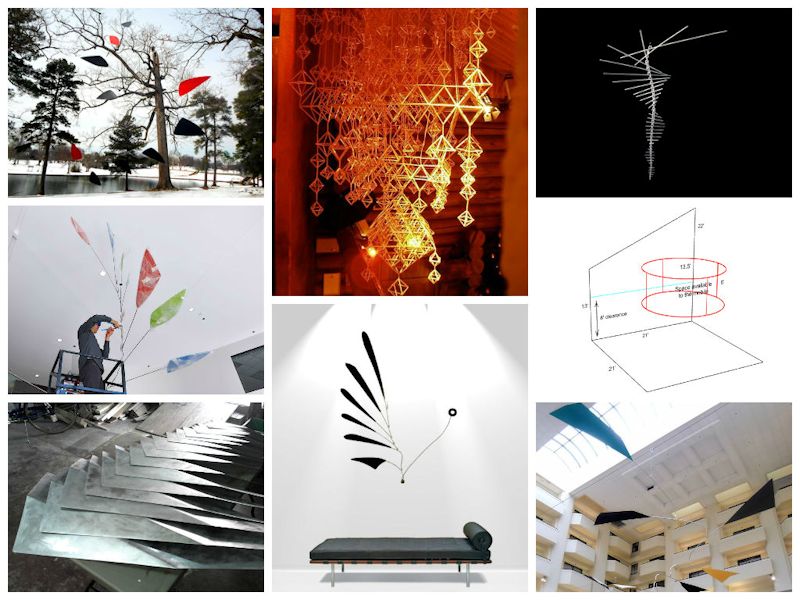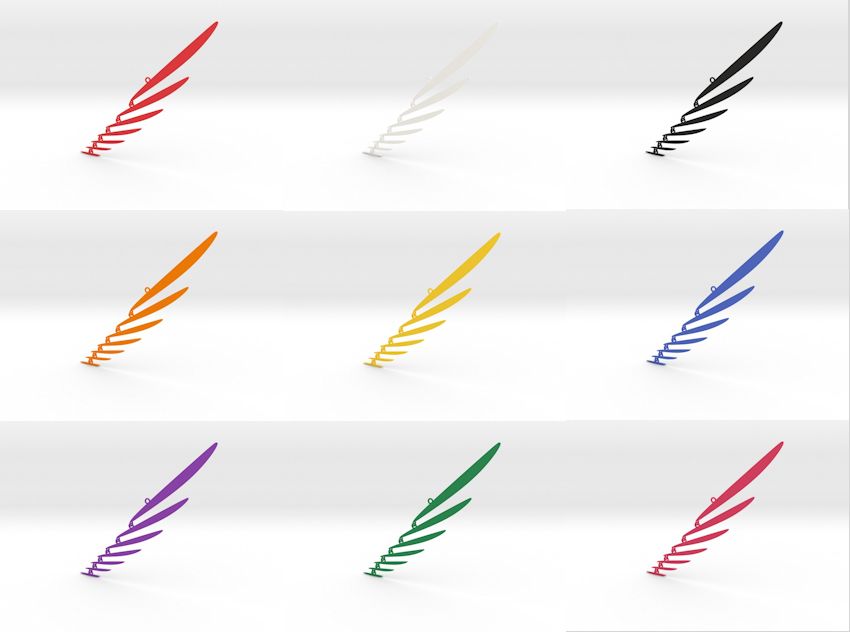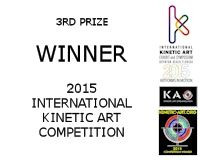3rd Prize Winner – 2015 International Kinetic Art Competition
I just found out that I won 3rd Prize in the 2015 International Kinetic Art Competition! I can’t quite believe it yet. Very exciting! The competition is organized by the Kinetic Art Organization as part of the International Kinetic Art Exhibit and Symposium in Boynton Beach, Florida.
The Kinetic Art Organization was founded in 2001 and its database and archive is now the largest compendium of Kinetic Art and sculptures information, photos and videos in the world. With over 1,000 members in over 60 Countries, they are also the largest kinetic art and sculpture organization in the world.
Here’s my winning entry, three large custom mobiles that I designed, made and installed at the Fair Oaks Marriott in Fairfax, Virginia last fall:
– See more photos –
Working on What Might Become a Very Large Suspended Kinetic Art Installation
Working on what might become a very large (207ft / 63m long) suspended kinetic art installation at the departure concourse at Norman Manley International Airport in Kingston, Jamaica:
Renders of the suspension (designed with Rhino):
Building the maquette (small scale model):
The design is by Tina Spiro with me and Ervin Nichol and inspired by the Petchary, a bird that migrates between the southeastern United States and Central America (including Jamaica):
See more of my custom hanging kinetic art sculptures or read more of my blog about mobiles and suspended kinetic art installation.
New Article I Wrote Is Featured on Houzz Today: “Art in Motion: The Story behind Mobiles”
Houzz is featuring a new article I wrote today: Art in Motion: The Story Behind Mobiles. It covers topics such as what mobiles are, the history of mobiles (including Alexander Calder of course), fine art mobiles, mobiles today, and how I became a professional mobile maker.
Versions of this article also appear on my website and on Saatchi Art (via Artsy on FB and Twitter and via Saatchi Art on FB and Twitter).
– Read of my blog about mobiles –
Google’s Alexander Calder Doodle Mobile Wouldn’t Work in Reality
On July 22 2011, Google replaced their logo on their homepage worldwide with a doodle to celebrate Alexander Calder‘s 113th birthday:
The doodle was a Calder-style mobile that used HTML5 canvas which made it possible for people to interact with it and make it move. It ran a physics simulation on the mobile’s geometry and then did real-time 3D rendering with vector graphics. You can still view the doodle and try it out (and you should, it’s a lot of fun!) via the Google Doodles Archive.
As someone who has written code for 3d animations and scripts for 3d printed mobiles, I have a lot of admiration for the technical end of this doodle. But as a professional mobile maker, it can’t help to notice that apparently there wasn’t enough research done on how the balance structure of a mobile works. The mobile shown in the Google doodle would never work in reality. It has two completely unsupported sections:
And reconstructing the mobile in my CAD software and calculating the balance points, it turns out that a number of them are incorrect. Here’s where they should be instead:
If someone were to make this mobile, the lowest four parts of it could be fixed by adjusting the balance points to their correct positions. However, that wouldn’t be enough for everything from there on up. The unsupported arms would need to be redesigned first. So in that way, the above indicated balance point corrections in the upper part of the mobile don’t really mean anything. Structural changes would have to be made first.
– Read of my blog about mobiles –
3D Printed Mobile 1 now available in 9 different colors
Our little 3D Printed Mobile 1 is now available in 9 different colors (yellow, green and orange are newly added). Today is the last day to order them if you’d like to receive them by Dec. 24th. $9 to $11 each depending on color:
– See our other 3D Printed Mobiles –
– Read of my blog about mobiles –

